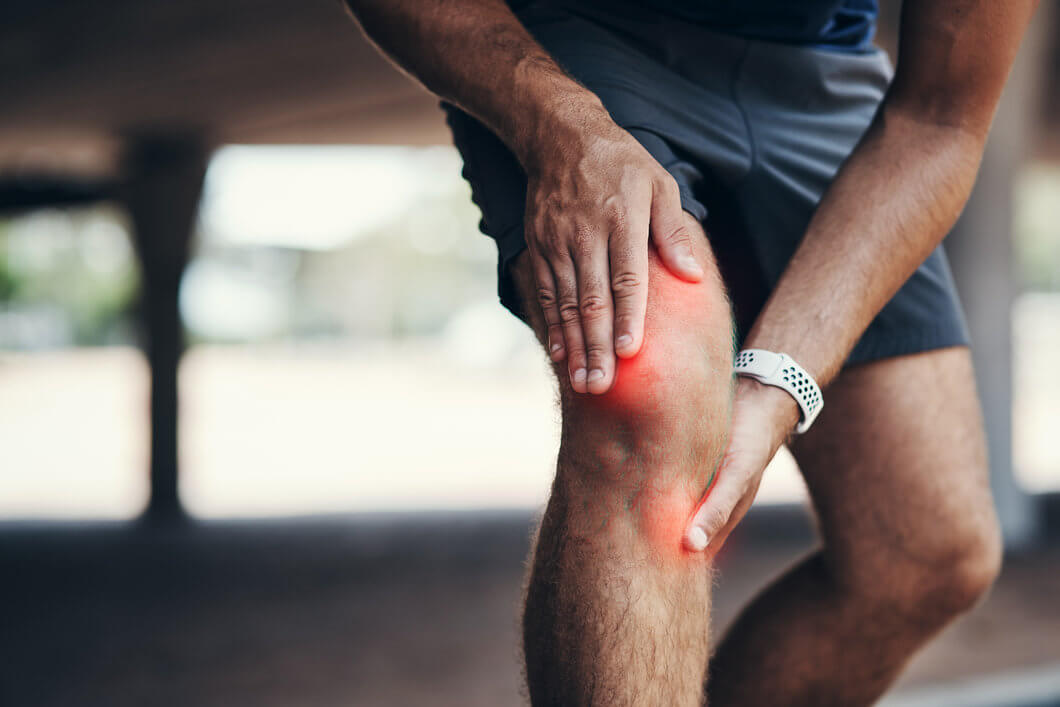Mr Kostas Tsitskaris
Consultant Orthopaedic Surgeon
Specialist expertise: Hip Conditions, Knee Conditions, Sports Injuries, Trauma, Orthopaedics, Hip, Knee, Hip Arthroscopy, Knee Arthroscopy, Hip Replacement, Knee Replacement.

A torn cruciate ligament is a very common knee injury. The cruciate ligaments are found inside your knee joint and cross each other like an ‘X’, the anterior cruciate ligament in front, and the posterior cruciate ligament behind it. They provide stability for the knee in everything from day to day function to extreme sport. They are supported by the muscles around the joint.
Anterior Cruciate ligament injuries can occur along with damage to other structures in the knee including articular cartilage, meniscus or the other ligaments.
Sometimes the cruciate ligament can be stretched, sprained or partially torn, which may result in some symptoms but without the severity of a complete tear. This distinction can only be made with the help of an MRI scan.
A torn cruciate ligament can happen in several ways:
It is commonly seen in skiing injuries or football and basketball but can occur with fairly innocuous twists. These injuries are rarer in patients over the age of 45.
After a tear of the cruciate ligament, you may hear a popping noise and feel your knee give out from under you. You may also feel any of these symptoms:
The most important symptom is that of instability, ie your knee giving way. This occurs when twisting or changing direction. It can happen in day to day activities, in light sport or only in extreme sport. The situations in which you experience your instability or apprehension is important information for your surgeon in determining the best course of treatment for you.
The severity of the damage will depend on how your OneWelbeck Orthopaedic consultant will treat you. You will more than likely be sent for imaging tests in our OneWelbeck Imaging centre and your consultant will carry out a physical examination of your knee. The decision on best treatment is curated for your personal needs based on your functional demands, your age, your athletic expectation and the activities that cause your instability. Irrespective of any of this, the first aim of treatment is to reduce the pain and swelling, restore the full range of motion and get your muscle strength and function back. This can lead to a stable knee, but even if it doesn’t, your knee is in prime position for the best outcomes after any reconstruction once the strength and range of motion have been restored.
Arthroscopy is a surgical procedure also known as “keyhole” surgery. It is used by surgeons to view a joint area, so any conditions, such as a torn cruciate ligament, can be diagnosed and repaired. Read more about arthroscopy.
Full recovery will depend on the location of the injury (fractures involving a joint take longer to fully recover) but it will range from a few weeks to up to a year.
Your surgeon will advise on how to mobilise the injury after surgery usually with the aid of a physiotherapist.
To ensure the quickest recovery, you can:
We are able to offer appointments to referred paediatric patients aged 12-18. For full information on our paediatrics service, please visit our main Paediatrics page.
Currently selected day
Available consultations
Causes
Changing direction rapidly, Stopping suddenly, S...
Symptoms
Pain, rapid swelling, tenderness, discomfort whi...
Treatments
Rest - bespoke treatment plan
Recovery
Paediatrics
We boast a truly integrated team of orthopaedic surgeons, sports medicine physicians, podiatric surgeons, rheumatology specialists, paid medicine consultants and hand therapy specialists. All of these services work together in one place, enabling us to give patients the best care possible.